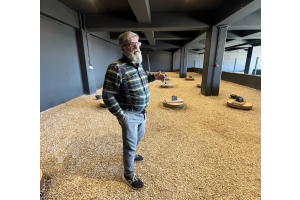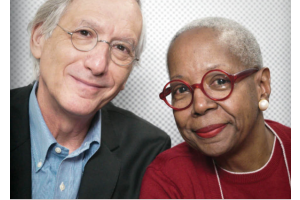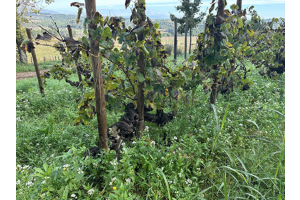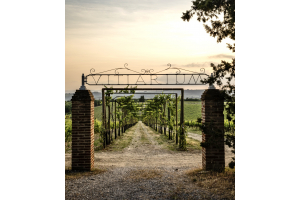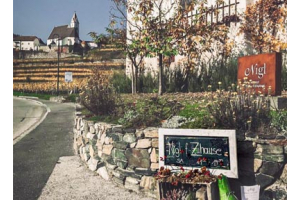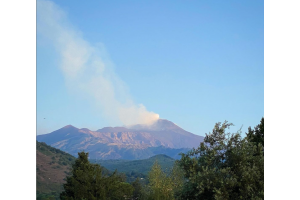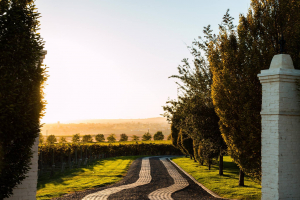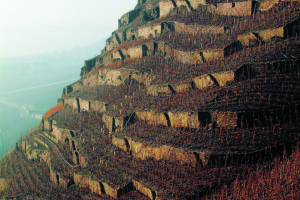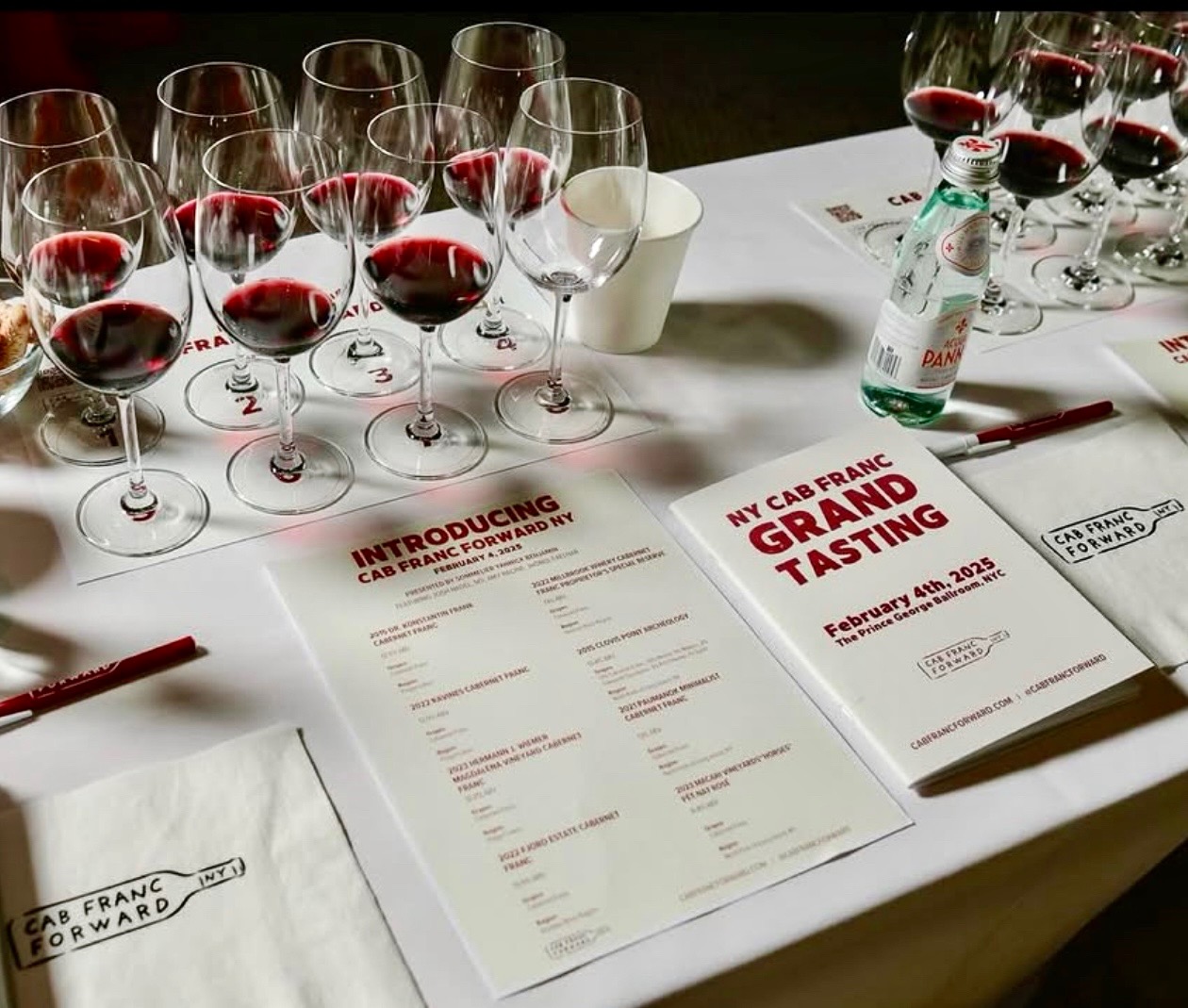
"Cab Franc is an immigrant success story," says John Leo of Onabay Vineyards on Long Island's North Fork, describing how this classic European variety has thrived in its New York home.
Recognizing this success, a group of New York wineries has formed Cab Franc Forward NY to champion the grape as the state's signature red variety. The inaugural Grand Tasting in Manhattan on February 4, 2025, brought together thirty-five wineries and over 500 attendees, including 280 wine professionals. The unprecedented event displayed Cabernet Franc's rising status—it's now New York's most planted red vinifera grape, with 638 acres under vine.
In attendance was Kevin Zraly, wine educator and author of the Windows on the World Wine Course, who stated, “New York is undoubtedly the best wine region in the U.S. for Cabernet Franc.”
New Digs
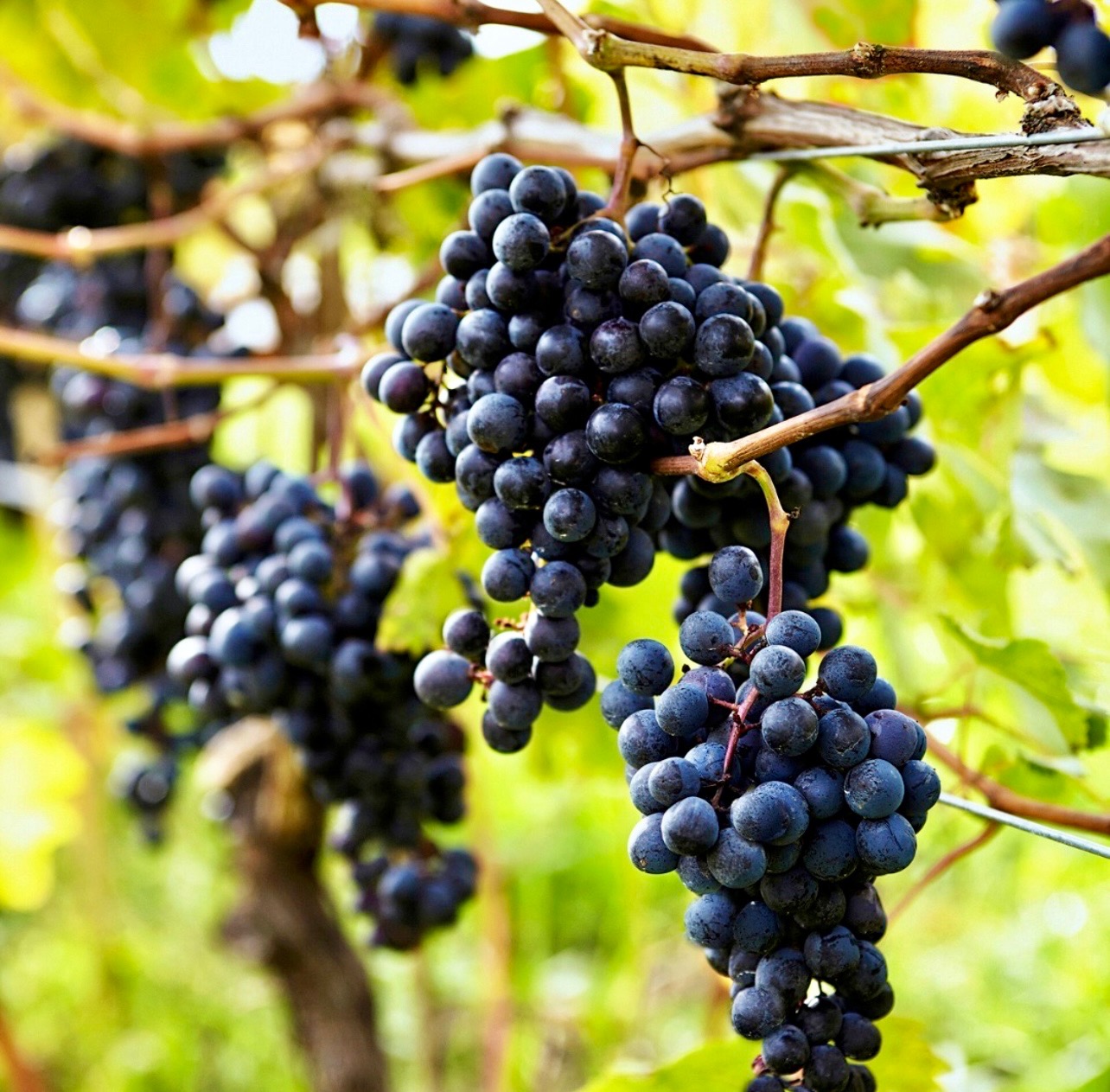 Cabernet Franc has traveled far from its French origins to find new stomping grounds. The grape's journey has taken a particularly successful turn in New York, fueled by its winter-hardiness, expressive nature, and growing enthusiasm from winemakers and consumers.
Cabernet Franc has traveled far from its French origins to find new stomping grounds. The grape's journey has taken a particularly successful turn in New York, fueled by its winter-hardiness, expressive nature, and growing enthusiasm from winemakers and consumers.
"It's been a gradual development," explains Oskar Bynke of Hermann J. Wiemer in the Finger Lakes region. "As the style of these wines has gained popularity with consumers, growers have also come to appreciate how well the grape performs in New York. It’s an adaptable variety—hardy, late-budding, and well-suited to our climate. So as we are seeing the development and the know-how on the agricultural side, it coincides with interest on the commercial side—it’s like a train going in the right direction.”
Christine Maguire, General Manager of Sheldrake Point in the Finger Lakes, echoes this growing enthusiasm, noting Cab Franc’s ability to produce a range of styles.
“It can make lovely sparkling, rosé, and blended and single-variety reds that are age-worthy,” says Maguire. “The grape has so many possibilities and everybody is starting to see that now.”
Hardy and Expressive
Perhaps most crucially, though, is Cab Franc’s resilience to the state's challenging winters. "Amongst the red vinifera grapes, it's one of the most cold hardy," observes Yancey Stanforth-Migliore of Whitecliff Vineyard in the Hudson Valley. “This hardiness and its ability to ripen consistently in a shorter growing season make it particularly well-suited to New York's climate.”
This practical advantage is just one part of the equation, though; just as vital is Cab Franc’s ability to convey the unique character of New York’s terroir.
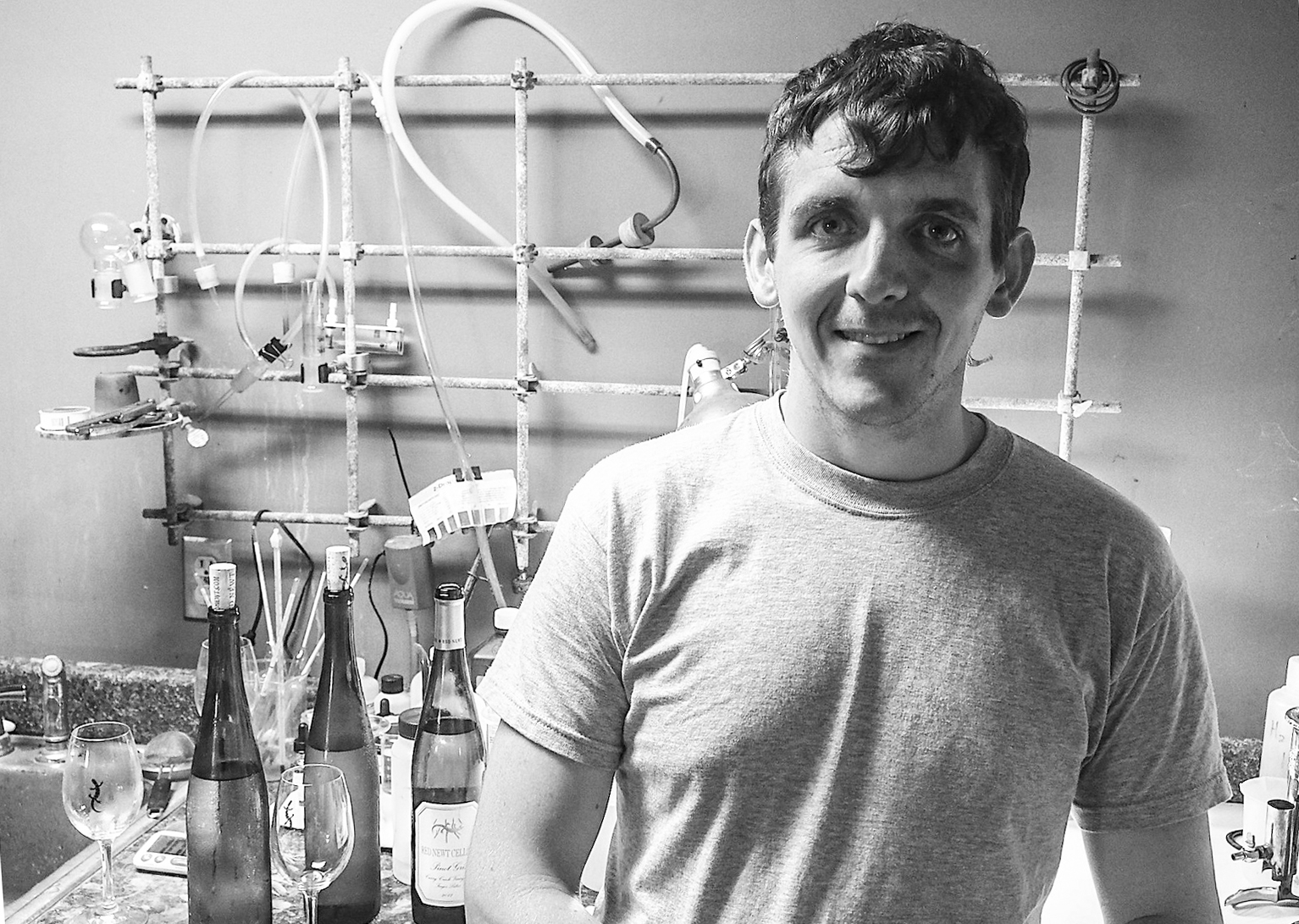 "The most important thing,” says Kelby James Russell (in photo) of Apollo's Praise, “is that Cab Franc, like Riesling, is incredibly expressive of its terroir. It translates the soil and the vintage beautifully and distinctly, and you can tease apart these vastly different expressions that are true to themselves and where they came from. There’s something really exciting about that.”
"The most important thing,” says Kelby James Russell (in photo) of Apollo's Praise, “is that Cab Franc, like Riesling, is incredibly expressive of its terroir. It translates the soil and the vintage beautifully and distinctly, and you can tease apart these vastly different expressions that are true to themselves and where they came from. There’s something really exciting about that.”
Leo Mora, winemaker at RGNY winery in the North Fork of Long Island, agrees, saying that New York’s Cab Franc wines can turn out very differently depending on the vintage. "The grape lends itself very well to winemaking that guides it without interfering too much," he notes, "coaxing the most of what Cab Franc can be: elegant, complex, and terroir-expressive.”
Some may debate which red grape, Cab Franc or Pinot Noir, thrives best in New York, but for Russell the answer is clear. “Cab Franc has triumphed over Pinot Noir because it’s more reliable year after year and produces equally expressive wines.”
From The Ice Age to Today
The soils play a big part, too. "We have a lot of clay that holds everything together on our hillsides, and Cab Franc has performed historically very well on clay soils," explains Jason Ferris, Resident Sommelier at Dr. Konstantin Frank in the Finger Lakes. “This soil affinity, combined with the moderating influence of the region's lakes, creates conditions where Cabernet Franc can achieve optimal ripeness while maintaining its characteristic freshness and complexity.”
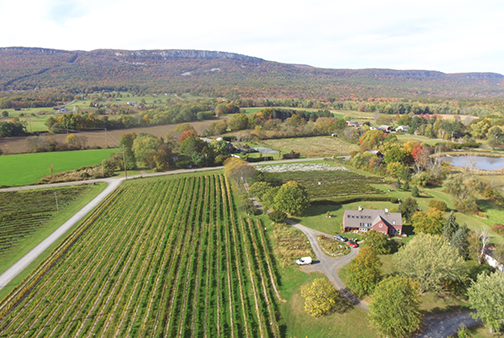 Further south, in Long Island and the Hudson Valley, Cab Franc thrives across diverse soil types. On Long Island, well-draining sandy and silty loam soils, with smaller amounts of clay, minimize vine stress and disease while promoting healthy root development—key to the grape’s success in the island’s maritime climate.
Further south, in Long Island and the Hudson Valley, Cab Franc thrives across diverse soil types. On Long Island, well-draining sandy and silty loam soils, with smaller amounts of clay, minimize vine stress and disease while promoting healthy root development—key to the grape’s success in the island’s maritime climate.
(Photo of Whitecliff Vineyards)
“The soils in our region were formed by glaciers during the Wisconsin Age 11,000 years ago,” says Mora. “They vary in depth depending on which area of the island you are on. In the winter and spring, our soils prevent water logging in our vines, and during occasional summer rains, they help control vine vigor and help the grapes ripen during the fall. They provide excellent drainage and balanced fertility, giving our Cabernet Franc wines unique expression and depth.”
The Hudson Valley offers an equally diverse terroir, where gravelly and sandy loam soils promote drainage, yielding fruit-forward, aromatic wines, while clay-rich sites produce more structured, robust Cab Franc. Brad Martz, winemaker at Whitecliff Vineyard, explains that the various soils, combined with the moderating influence of the Hudson River, make the region highly site-specific with distinct expressions emerging from different vineyards.
“The diversity of soils that our Cab Franc is planted in helps us make really interesting and tasty wines,” says Martz.
The French Connection: History and Food
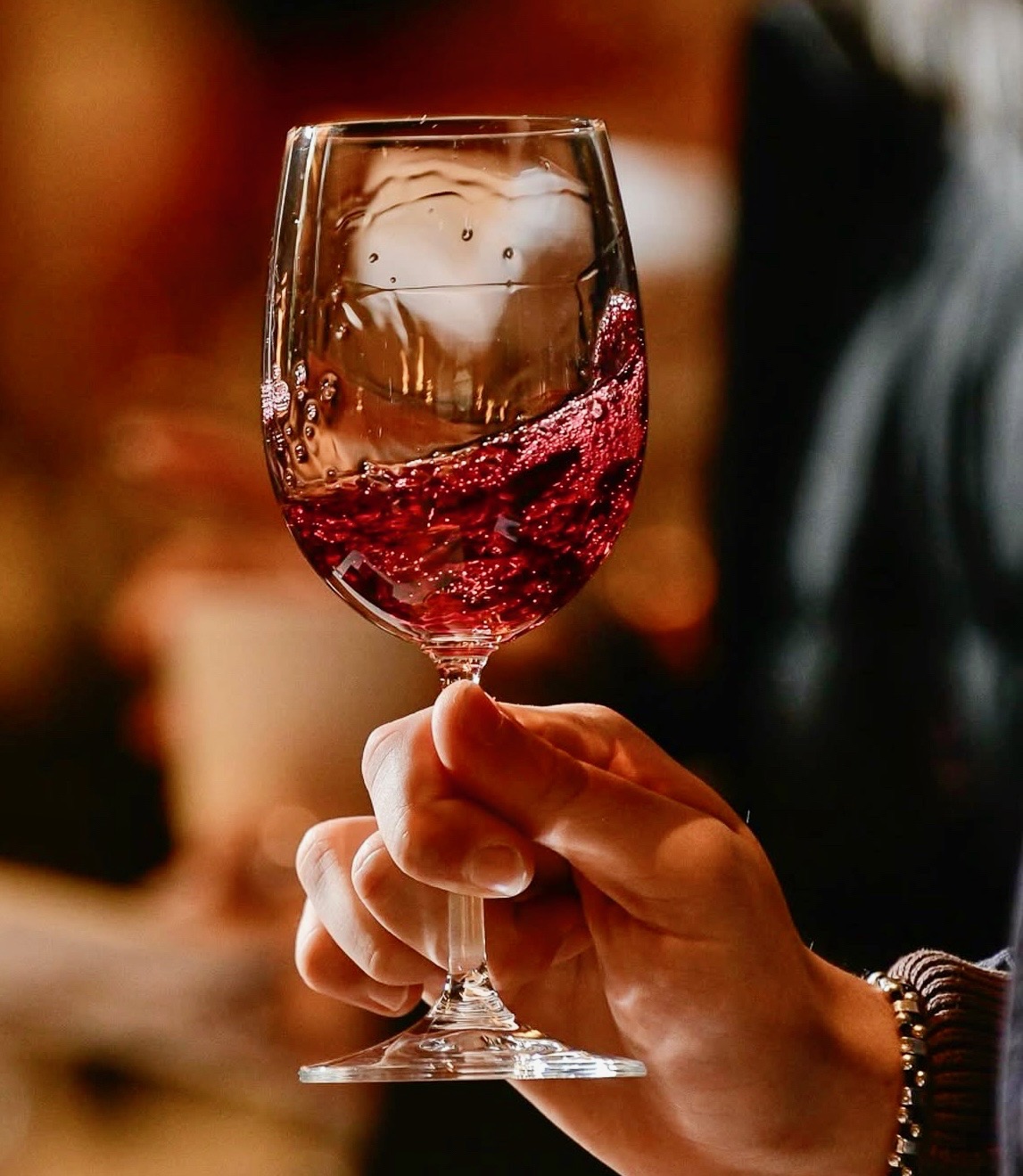 Believed to have originated in Bordeaux, Cabernet Franc is a key blending grape in the famed Left Bank Médoc and Right Bank Saint-Émilion and Pomerol wines. In the Loire, where it has also been planted for centuries, it shines as a single-varietal wine, producing elegant and structured wines like Chinon and Saumur-Champigny.
Believed to have originated in Bordeaux, Cabernet Franc is a key blending grape in the famed Left Bank Médoc and Right Bank Saint-Émilion and Pomerol wines. In the Loire, where it has also been planted for centuries, it shines as a single-varietal wine, producing elegant and structured wines like Chinon and Saumur-Champigny.
Over centuries, its adaptability and ability to express terroir have made it a favorite among winemakers, and today, the grape has found homes in wine regions worldwide, from Italy to Chile to the United States.
New York’s take on Cabernet Franc hints at its French roots but has a personality all its own. Marz points out that while there are similarities, New York versions tend to be brighter and more vibrant, thanks to their naturally higher acidity.
Similar to the Old World versions, Cab Franc's stylistic range makes it a great match for many cuisines. “We can harvest it early to make rosé or Blanc de Noirs sparkling wine because it achieves ripeness pretty early,” says Martz. “We can also make a robust red if we want to do it that way, or we can get a crisper, brighter, easier-drinking red wine if we do everything in a stainless steel tank.”
No matter the style, Cabernet Franc maintains its food-friendly appeal. “Even when made in a lighter style,” he adds, “Cab Franc retains enough tannic structure to provide balance and depth, making it an excellent choice at the table, pairing with everything from steak to chicken and even dishes not typically matched with red wine.”
A Grape on The Rise
Another factor driving the rise of New York’s Cabernet Franc is the improved quality, in recent years, of better plant material.
“We have discovered better clones that have become available in the last 15 to 20 years,” says Leo. “These plantings have made Cab Franc more interesting to us as growers and winemakers.”
Leo notes that a lot of the early plantings came from West Coast wineries and required more heat and richer soils. “They didn’t ripen well here,” he says, “so we thought Cab Frank was light, fruity, and simple. Then we planted better clones, and now we’re making wines that are richer, riper, and deeper in color.”
Beyond improvements in plant material, Cabernet Franc has proven to be remarkably adaptable across New York’s diverse wine regions. “I don’t think it’s the only grape we do well,” says Leo, “but it does seem to thrive in different climates throughout the state, and that’s a really important part of it. Initially, it was planted as a blending grape, but over time, we've discovered it can also stand alone in a good year.”
As enthusiasm for Cabernet Franc builds, it has indeed become the defining red grape variety for New York State. “A lot of wineries are getting behind Cab Franc,” says Oskar Bynke. “We want to claim it, to put a stake down and say New York is in.”
Read Dorothy J. Gaiter and John Brecher: Cabernet Franc on the Hudson: Why Wineries Are Taking the Risk

